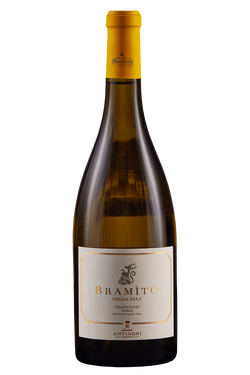- Wines >
- White wines >
- Umbria
The best white wines of Umbria
For centuries, vineyards and olive groves have characterised Umbria’s landscape and its farming economy. With a landscape that is 70% hilly and the rest mountainous, Umbria’s territory is well suited to viticulture, also because of its moderately dry climate, with cold winters, hot summers, and good day-night temperature ranges, which positively influence the concentration of aromas in the grapes. Local wines, both red and white, are of high-quality, and are obtained from grapes selected from the region’s best varieties. The lion’s share of Umbria’s wines is undoubtedly based on Grechetto, a native white grape variety widespread throughout the region and also found elsewhere (Abruzzo, Tuscany, Marche, and Lazio), which is used to produce both monovarietal and blended DOC wines. Its main growing area in Umbria is around Todi and Orvieto, where wine is produced in the homonymous designations.
Major designations
The Orvieto DOC (Denominazione di Origine Controllata) designation envisages various versions, including dry, medium-dry, medium-sweet, sweet, superiore, late harvest and noble rot, while Todi DOC can be produced as a still Grechetto wine, or in Superiore and Passito (raisin wine) versions. Umbria’s other white grape varieties are Malvasia Bianca, Procanico, Canaiolo Bianco, Verdello and Trebbiano Toscano. The first, Malvasia Bianca Lunga, also grown in Tuscany, where it is also used for Vin Santo, is found in the designations Spello IGT (IndicazioneGeografica Tipica) and Narni IGT, and in the wider Umbria IGT designation. Trebbiano Toscano, also found in Tuscany in various designations (Bianco dellaValdinievole DOC, Bianco di Pitigliano DOC, Pisano San Torpé DOC), grows very well in Umbria, where it is used in 15 designations including Torgiano DOC, Montefalco DOC and Assisi DOC.
Pairings with white wines from Umbria
The white wines of Umbria display wonderful aromas, character and versatility in pairing. An intense, characteristic Trebbiano Toscano, with its attractive citrus or lemony aromas (depending on the aspect of the vineyard), and flavourful, solidly built palate, is good for an aperitif, or with fish main courses. Grechetto, especially in the Orvieto and Todi DOC zones, has personality to spare and a host of different expressions, with many versions available. In the dry version (straw yellow hue, mineral and peachy aromas) the pleasantly tangy palate goes well with seafood pasta and rice dishes, such as garganelli with asparagus and clams, orecchiette with sea bass or risotto with scampi. The late harvest version and even more so the noble rot version are concentrates of aromas and taste, sweet and harmonious on the palate, but balanced by a certain freshness. For a wine with these characteristics, the best pairings are mature and blue cheeses, as well as creamy desserts.
More harmonious flavours and aromas
Narni IGT, a blend of various white grape varieties from Umbria, including Malvasia, is a white that generally offers an attractive nose, good structure and length on the palate, so much so that it can be enjoyed as an aperitif or paired with cold dishes, such as a pasta salad or plain Cantonese rice. Assisi DOC offers two choices, starting with the straw yellow Grechetto-based version, offering a peachy nose, full-flavoured palate and almondy finish, and then the Bianco, which brings together various native varieties. In both cases a bottle can be enjoyed throughout a meal with family or friends, opting for dishes with moderately intense flavours. Now that you know everything about this region, it’s up to you to try some tasty pairings! Have fun!




